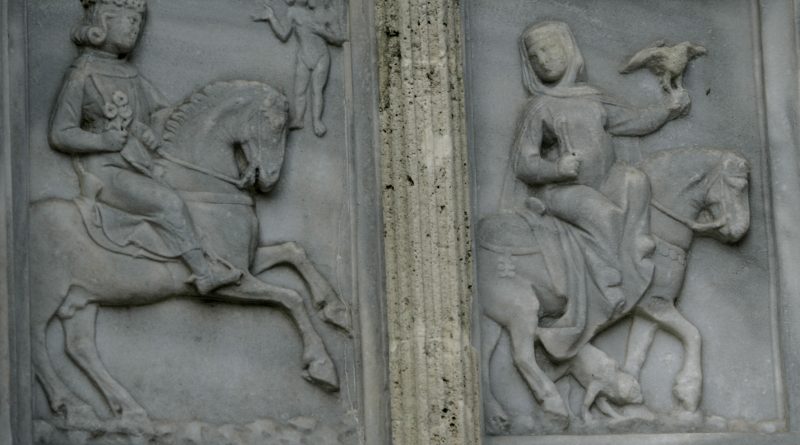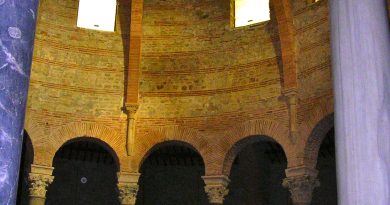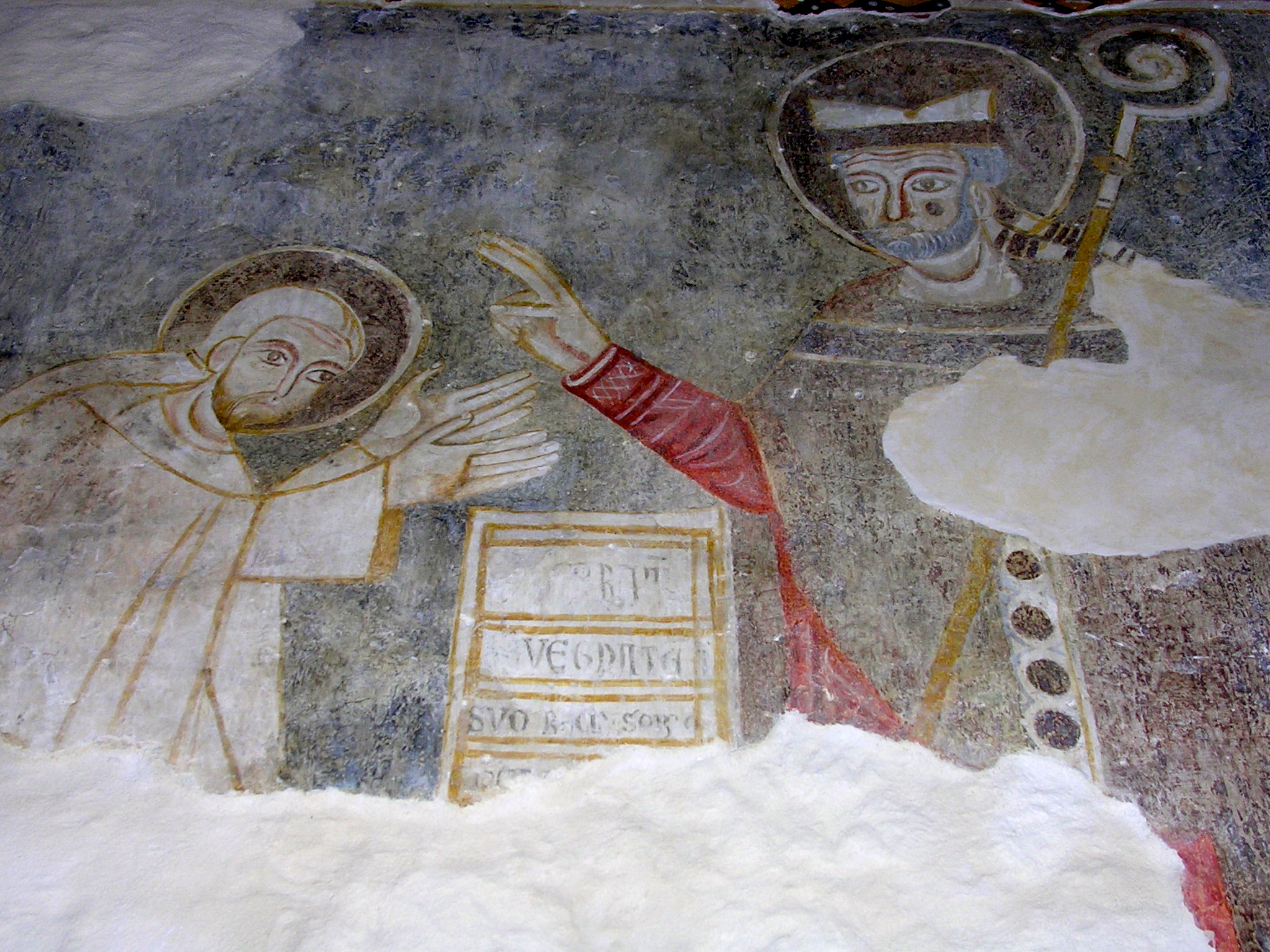Uxor, the ideal bride in the Main Fountain
In the cycle of the twelve months of the year, carved by Giovanni and Nicola Pisano in 1278 on the Main Fountain of Perugia, May is represented by an uxor (latin term for wife) riding a horse and followed by an elegant medieval knight.
The lady of May is holding a hawk on her left arm, and a whip in her right one. The man has three roses for his wife: the scene represents the symbolic language of the age of chivalry and courtly love (amor cortese).
The two figures carved in the marble in the lower basin of the monument, remind to the atmosphere of a courtly wedding, as in the Middle Ages it was usual for the wedding party to parade through the streets of the city, with the bride on horse at the head of the procession.
The parents, the relatives and the friends followed the bride to her new residence: the house of the family of her husband.
The panels dedicated to the months of August and January represent two figures of wives helping in everyday activities, including work in the fields, such as the lady of August that is shown in the panel collecting figs with her husband.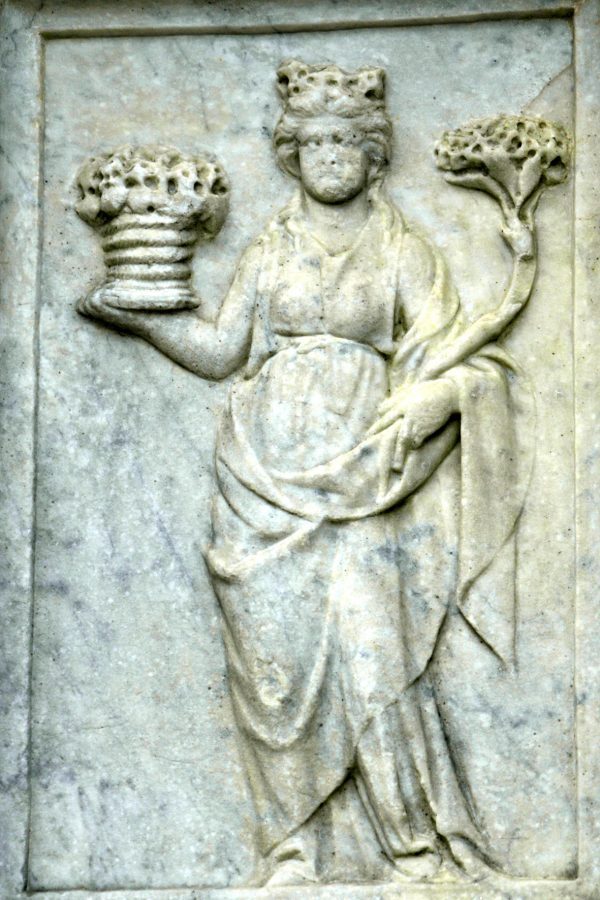
In April and May, months of springtime, the uxor takes on the ideal role of a bride, whereas the function of the medieval woman has shifted more towards the domestic sphere, in the panels representing August and January.
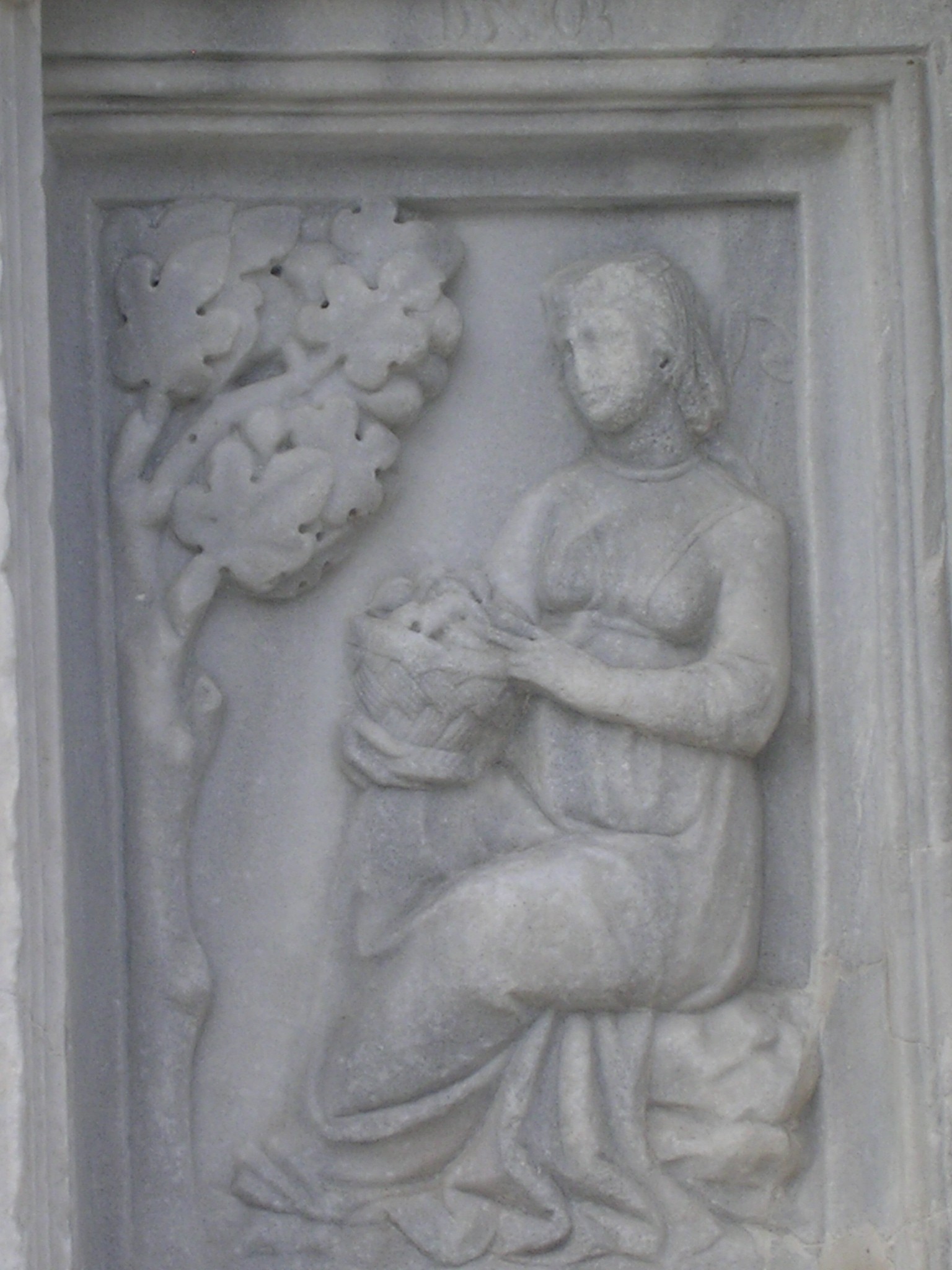
In perfect accord with the passing of time, the uxor in the panel dedicated to August is represented by a flowered and matured woman. She is no longer the young and immature bride as depicted in April and May. The lady in the panel of January is aged, because the winter month represents the changeover from the old to the new year, when nature is at rest, when husband and wife are sitting near the fireplace, eating bread and meat and drinking water and wine. The Zodiac sign is Aquarius. The woman depicted in this month looks close to the end of life, next to death, but at the same time she represents a symbolic time awaiting the dawn of spring season, anticipating the rebirth of a new life.

